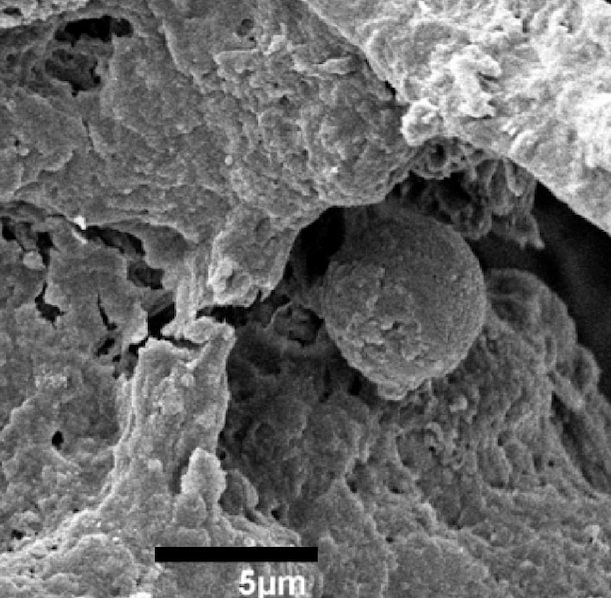Ancient Pottery Fragments Show That Prehistoric Humans Used Spices Too
Shards of 6,000-year-old cooking pots from northern Europe show traces of mustard seed, likely used as a seasoning for fish and meat
/https://tf-cmsv2-smithsonianmag-media.s3.amazonaws.com/filer/Surprising-Science-Ancient-pottery.png)
As the inane car insurance commercials suggest, ancient humans were smarter than we give them credit for. They created some of the same words we still use today. They even brewed beer.
Now evidence suggests that they had some culinary flair as well. A new analysis of food residue encrusted on millennia-old pottery shards collected from sites in Germany and Denmark shows that prehistoric humans used the spice mustard seed to season the plant and animal staples that made up the bulk of their diet.
As part of the new study, published today in PLOS ONE, researchers from the UK’s University of York and elsewhere chemically analyzed the residue on ancient pieces of pottery that are part of the collections of a trio of museums—the Kalunborg and Holbæk Museums, in Denmark, along with the Schleswig-Holstein Museum in Germany. The artifacts were originally excavated from three different sites in the same two countries which are between 5,750 and 6,100 years old, an era during which people in the area were in the midst of transitioning from hunter-gatherer to nomadic societies.
When analyzing the food gunk encrusted on the pottery, the team looked specifically at phytoliths, microscopic granules of silica that plants produce and store in their cells after absorbing silicic acid from the soil. Different plants produce slightly different types of phytoliths, so by closely examining them, the scientists were able to figure out which sorts of plants had been cooked in the pottery.
They found that the residue from the insides of the pots had much larger quantities of phytoliths than the outsides, confirming that the granules were indicative of cooking use. When they compared the size and shape of the phytoliths to databases of hundreds of modern plant phytoliths, they most closely matched that of mustard seed. The team also found oil residue from both land animals and marine life, and other plant residues that come from starchier plants—suggesting that these prehistoric people were cooking fish, meat and plants in the pots and seasoning them with the mustard seed.

A microscopic image of one of the mustard seed phytoliths detected on the pottery shards. Image via Hayley Saul
For the scientists, the most surprising aspect of the find is the pots’ age. Until now, the oldest clear evidence for spice use was the discovery of residue from ginger and turmeric in 4,500-year-old cooking pots linked to the Harappa culture, in Northern India. But the new find shows that humans were using spices more than 1,000 years earlier.
In Northern Europe, this was a time soon after domestic animals, such as goats and cattle, were introduced, dramatically remaking these societies’ lifestyles. Still, at this point, crops were not known to have been domesticated—these people were still centuries away from the fully settled agricultural societies that would eventually dominate.
Previously, experts thought that the use of plants in cooking during this era was solely motivated by a need for calories. But the presence of mustard seed, which provides essentially no caloric or nutritional value, indicates that these prehistoric people valued taste as much as we do.
/https://tf-cmsv2-smithsonianmag-media.s3.amazonaws.com/accounts/headshot/joseph-stromberg-240.jpg)
/https://tf-cmsv2-smithsonianmag-media.s3.amazonaws.com/accounts/headshot/joseph-stromberg-240.jpg)